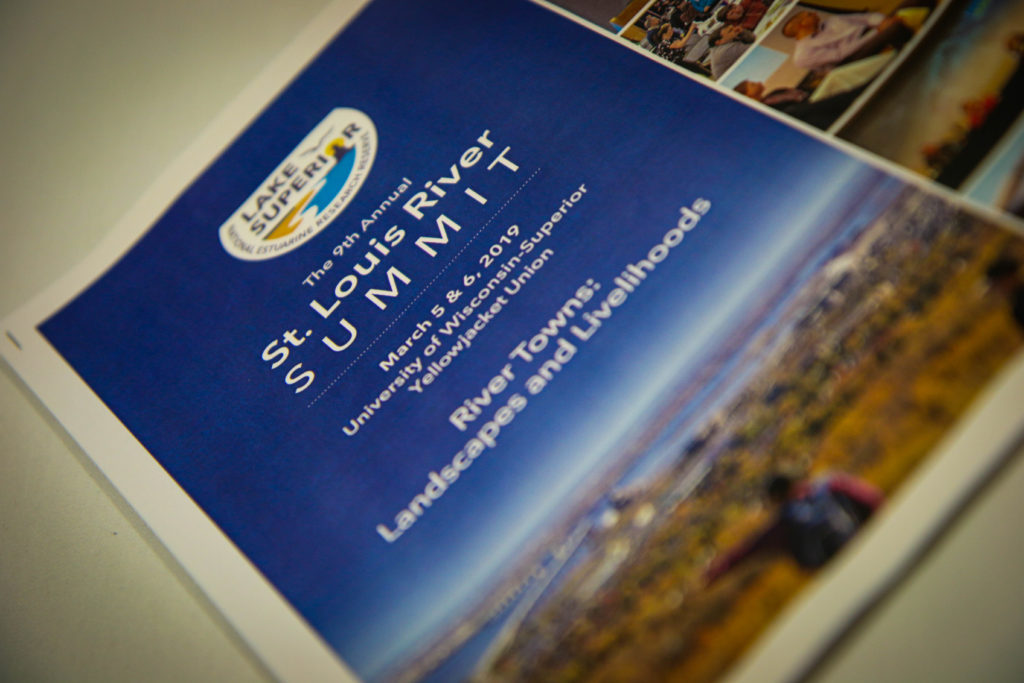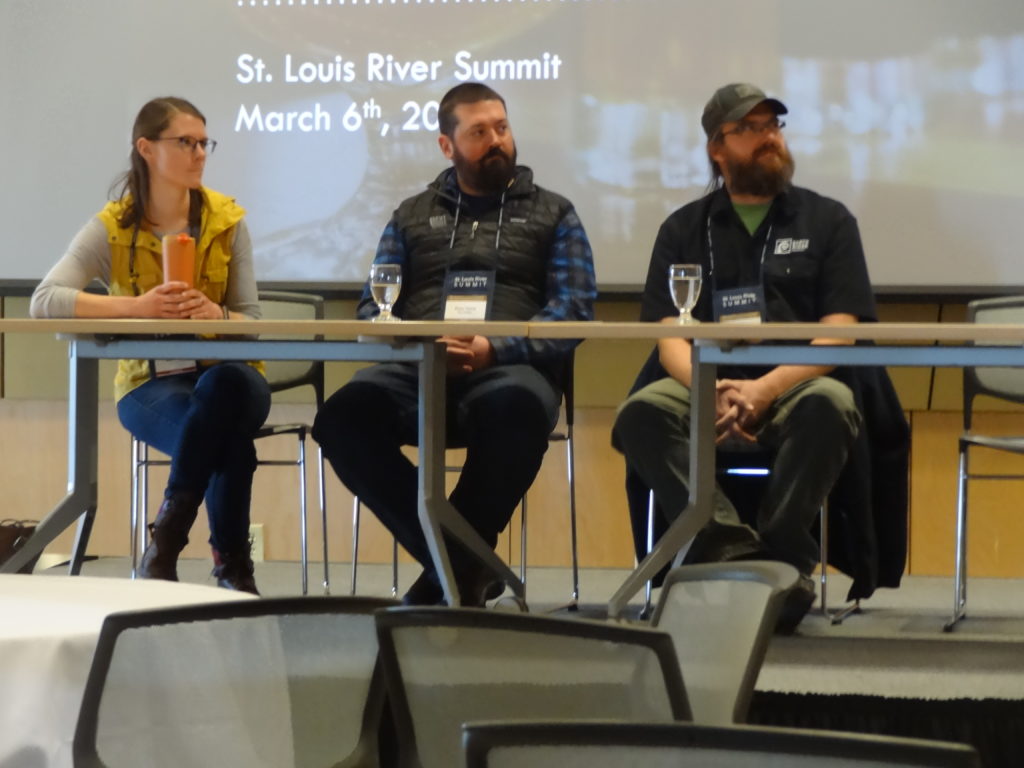
Image by University of Wisconsin-Superior
The St. Louis River Summit was held last week at the University of Wisconsin-Superior. This year’s theme was “River Towns: Landscapes and Livelihoods.”
One of the first speakers was Superior Mayor Jim Paine, who challenged Summit participants to be storytellers during the next year. He said that telling stories is the best way to form connections between people and the St. Louis River.
I’ve attended every Summit except for one. I learn something new every time. Here’s my trove from this year’s event.
- Efforts to restore wild rice in the St. Louis River Estuary faced challenges last year in the form of a seed shortage and depredation from Canada geese. (Melissa Sjolund, MN DNR)
- The William A Irvin tourist attraction ship will be moved back into its berth in the Minnesota Slip next May or June, depending on weather. (To watch a video of this tricky operation, see when the ship was moved out for pollution control efforts in the slip here.) (LaRae Lehto, MPCA)
- Solastalgia is an English term that captures the feelings of place-based distress people have when unwelcome environmental changes happen to their homes or a beloved space. (Leah Prussia, College of St. Scholastica)
- Kayakers and canoeists visiting wild rice stands in the estuary in 10-minute intervals during mornings and evenings can work to deter geese predation on wild rice beds. (Sam Hansen, University of Wisconsin-Superior)
- If the current section of the Lake Superior Mississippi River Railroad that crosses over Mud Lake was removed from the tourist train ride as is proposed, tourist spending could fall by $400,000 annually and train ridership could decrease by 40 percent because it’s one of people’s favorite features of the ride. (Monica Haynes, University of Minnesota Duluth)
- Muskies from a Wisconsin strain (Chippewa Flowage) that are stocked in the St. Louis River tend to hang out in the river more than the Minnesota strain, which spend more time in Lake Superior. (Graham Hanson, U.S. EPA)
- Five percent of the muskies in the St. Louis River are trophy size (over 50 inches long). (Jeramy Pinkerton, MN DNR)
- The blue-green algae blooms that happened in Lake Superior in 2012 and 2018 occurred after major rain events, 25 and 53 days later, respectively. Thankfully, no toxic algae were detected in the blooms. (Robert Sterner, UMD Large Lakes Observatory)

The panel of brewers: Megan Kaiser of Bell’s Brewery, Byron Tonnis of Bent Paddle, and Frank Kaszub of Earth Rider. Image by Marie Zhuikov, Wisconsin Sea Grant.
The conference ended with a keynote panel of brewers from Minnesota, Wisconsin and Michigan who shared why clean fresh water is important for their businesses and what practices they put in place to protect the environment.
Earth Rider Brewery in Superior bubbles carbon dioxide through their wastewater tank to increase the water’s pH before they release it into the sewers.
Bent Paddle Brewery in Duluth centrifuges their beer to remove solids instead of filtering it, which reduces their water use per gallon of beer by about a gallon. (It takes about seven gallons of water to make one gallon of beer.)
Bell’s Brewery in Kalamazoo automated all of their foam sprayers and saved millions of gallons of water each year (versus having the water spray continuously). They also have a café where they compost leftover food, plus they use compostable plates and straws.
The panel closed out the conference with some top-secret advice for home brewers: “If you have happy yeast and clean equipment, you’ll get good beer!”
Who knew you can learn beer advice at a science conference? Just imagine what next year’s Summit might hold!


